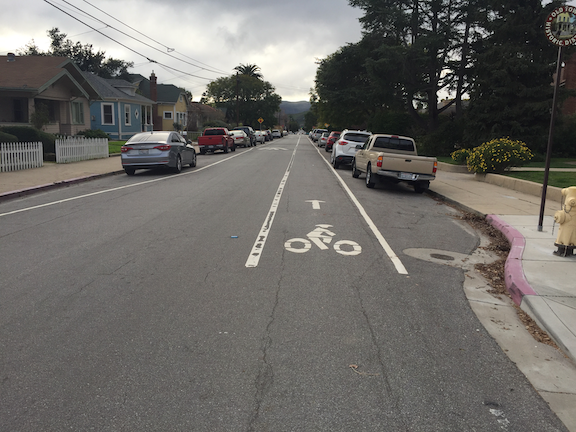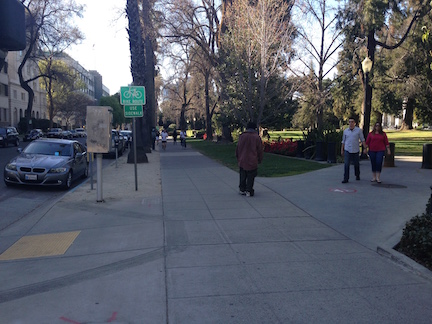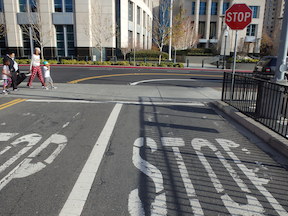Now, on to why I brought up the topic of prudent drivers. A prudent driver on a two lane (one lane in each direction) roadway largely controls the behavior of irresponsible drivers. On wider roads, with two lanes or more in a direction, whether a one-way or two-way, the irresponsible driver can do as they wish, violating laws and endangering others. On the narrower roadway, the irresponsible drivers get irritated, and honk and cuss, but there isn’t much they can do about it. This difference in large part explains why fatality and severe injury crashes are rare on residential streets within neighborhoods, and are common on arterial streets with multiple lanes. It also explains why rural roads have such high crash rates, because the prudent driver there can’t really control other drivers. On two lane streets, prudent drivers set the tone; on multiple lane streets, irresponsible drivers set the tone.
We have proven, over the history of motor vehicle use in the US, that is is not possible to significantly change the behavior of drivers. Education doesn’t do it, enforcement (even when that used to be more common) doesn’t do it. Nearly all of the improvement in roadway deaths has been due to safer cars, not to safer drivers or safer roads, and now that improvement is reversing itself as more and more walkers and bicyclists are killed by irresponsible drivers.
I am not against education, if it is directed at the most dangerous behaviors, which it is not, and I am not against enforcement, if it is done in an unbiased manner, which it is not. Each state has an agency, usually called the Office of Traffic Safety (OTS), whose mission is to obscure the real causes of crashes and to blame walkers and bicyclist for their death and injury, and at the federal level, the National Highway Traffic Safety Administration (NHTSA) fulfills this function admirably. In this, they are often aided and abetted by the law enforcement agencies. The reason CHP is California is so opposed to automatic speed enforcement is because it would remove the mis-focus and bias that they otherwise rely upon.
Driver behavior must be controlled by roadway design. That is why I strongly believe that all multiple lane roads must be reduced. Two lane one-way streets must be converted to two-ways streets with only one lane in each direction (and any other lanes converted to pedestrian, bicyclist or transit use). Two-way roadways with two or more lanes in the same direction must be reallocated to other uses. Again, excess capacity would be converted to pedestrian, bicyclist, or transit use, or even to development as overly wide streets shrink to fit the real need.
I have no illusions about the huge change in traffic flow. Those drivers who have gotten used to having plenty of space for themselves (their cars) would have to figure out how to use less: fewer trips, shorter trips, slower trips. People would make different decisions about where they live, where they work, where they shop and recreate. As far as I am concerned, this is all to the good.
Our freeways are designed by the ‘best and brightest’ engineers to be as safe as possible, allowing errant vehicles extra space, protecting hard objects with guard rails and impact attenuators (crash barriers), and using ridiculously wide travel lanes, yet still have very high crash rates. Spending more money apparently doesn’t make freeways safer, and the explanation for this is risk compensation, the proven effect that irresponsible drivers will increase their unsafe behavior to maintain the same level of risk. Think about the daily news items about crashes that close freeways for significant periods of time, and how often they happen. None of these need to happen, and I’d argue that an irresponsible drivers is the primary cause of each and every one of them. This post is about local streets, not freeways, but it is worth remembering that irresponsible drivers are everywhere.
I don’t believe that one single death or severe injury for a walker or bicyclist is worth any amount of convenience for motor vehicle drivers. Not one.
So, I ask every transportation agency in the Sacramento region to:
- cease widening roads, forever
- analyze all one-way roads with three or more lanes to determine the most dangerous ones, and convert these within two years
- analyze all two-way streets with more than one lane per direction for the most dangerous ones, and convert these within five years
- analyze the remaining roads that are not one lane per direction, for the most dangerous ones, and convert these within ten years
- complete conversion of all roads within twenty years
- stop victim blaming








